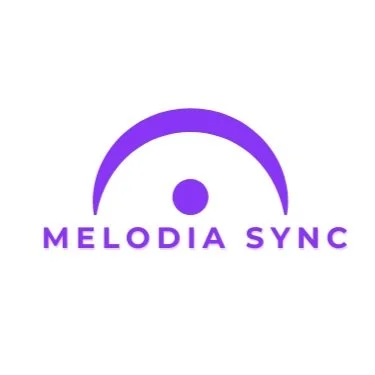Dopamine and the Disappearing Drive: How Burnout Hijacks Your Motivation
Have you ever finished a project, hit a milestone, or received praise, but felt nothing? Or maybe you're finding it harder to start tasks, stay focused, or even care. This isn’t laziness or poor time management. It could be your brain’s dopamine system crying out for help.
Dopamine is your brain’s motivation and reward chemical. It gives you drive, excitement, focus, and a sense of accomplishment. When burnout hits, this system falters, and so does your ability to feel fulfilled.
This article explores the fascinating role dopamine plays in your brain, how burnout disrupts its balance, and what you can do to reset your motivation.
What Is Dopamine?
Dopamine is a neurotransmitter — a chemical messenger that helps neurons communicate. It plays a huge role in:
Motivation and goal-directed behavior
Emotional regulation
Reward processing
Focus and working memory
Movement and motor control
While dopamine has many jobs, its most well-known function is creating that "feel-good" sensation when you accomplish something meaningful.
The Four Major Dopaminergic Pathways in the Brain
Dopamine works along four main pathways, each with unique roles:
1. Mesolimbic Pathway: The Reward Circuit
Starts in the ventral tegmental area (VTA) and projects to the nucleus accumbens.
Controls pleasure, motivation, and reward anticipation.
Gets activated when you eat your favorite food, achieve a goal, or get social approval.
2. Mesocortical Pathway: The Motivation and Cognition Loop
Also starts in the VTA and connects to the prefrontal cortex.
Helps with planning, decision-making, emotional regulation, and goal-setting.
Impairment in this pathway is linked to apathy, low mood, and executive dysfunction.
3. Nigrostriatal Pathway
Connects the substantia nigra to the striatum.
Plays a key role in motor control and movement coordination.
Deficits here are associated with Parkinson’s disease.
4. Tuberoinfundibular Pathway
Runs from the hypothalamus to the pituitary gland.
Regulates hormone secretion, particularly prolactin.
Less relevant to burnout, but important in the broader dopamine picture.
In burnout, the mesolimbic and mesocortical pathways are the most affected. Let’s zoom in on them.
Burnout and the Mesolimbic Pathway: Blunted Reward Sensitivity
Imagine pushing through your day with no spark, no excitement, and no payoff. That’s what happens when your mesolimbic pathway breaks down.
What Burnout Does:
Reduces dopamine synthesis in the nucleus accumbens, your brain’s "reward hub."
Lowers receptor sensitivity, making it harder to feel pleasure from everyday achievements.
Leads to anhedonia (the inability to feel joy).
Symptoms You Might Notice:
You feel flat or emotionally numb.
Things you used to enjoy (like music, food, or hobbies) don’t feel rewarding anymore.
You need more stimulation (e.g., endless scrolling, junk food, risky behavior) to feel anything.
This is why burnout can lead to overindulgence or even addictive behaviors. Your brain is trying to get the dopamine boost it can no longer generate naturally.
Burnout and the Mesocortical Pathway: Executive Dysfunction and Emotional Blunting
While the mesolimbic circuit controls the pursuit of rewards, the mesocortical pathway helps you plan how to get them.
What Burnout Does:
Reduces dopamine in the prefrontal cortex, the brain’s decision-making center.
Weakens your ability to prioritize, focus, and regulate emotions.
Symptoms You Might Notice:
Feeling disorganized or mentally scattered
Struggling to start or finish tasks
Trouble making decisions, even simple ones
Feeling emotionally "muted" or apathetic
In essence, you know what you should do, but can’t seem to do it. This isn’t a willpower issue; it’s a chemical imbalance.
Dopamine Burnout vs. Depression: What’s the Difference?
The symptoms can overlap, but they’re not the same:
Important: Burnout can become depression over time. If symptoms persist or worsen, seek professional help.
How to Reboot Your Dopamine System
The good news? Your dopamine system can recover. Here’s how to help it reset:
1. Reduce Overstimulation
Limit screen time and digital distractions.
Avoid constant multitasking.
Take real breaks without dopamine-seeking (e.g., social media).
2. Engage in Natural Dopamine Boosters
Exercise: Especially cardio like walking or dancing
Sleep: Get 7–9 hours; dopamine is synthesized during deep sleep
Nutrition: Eat foods rich in tyrosine (e.g., almonds, bananas, eggs)
3. Set Small, Meaningful Goals
Your brain loves achievable wins.
Break tasks into micro-goals to rebuild reward sensitivity.
4. Use Science-Backed Tools to Minimize the Effects of Stress
MelodiaSync’s EEG-guided binaural beats help retrain your brain to enter calm, focused states. This may support dopamine regulation and makes it easier to find pleasure and motivation again.
It’s Not Just You – It’s Your Brain Chemistry
If you’re feeling stuck, unmotivated, or joyless, you’re not broken. Your dopamine system may just be depleted from chronic stress and emotional overload. By understanding how dopamine works and how burnout hijacks it, you can take steps to restore balance and rediscover your drive.
The first step? Start small, and give your brain the time and tools it needs to recover.
Need Help Resetting? Explore how MelodiaSync can support your recovery from burnout with neuroscience-backed audio therapy designed to restore balance in your brain.
Disclaimer: This blog post is intended for informational purposes only and does not constitute medical advice. Please consult a qualified healthcare professional for any medical concerns or treatment decisions.



